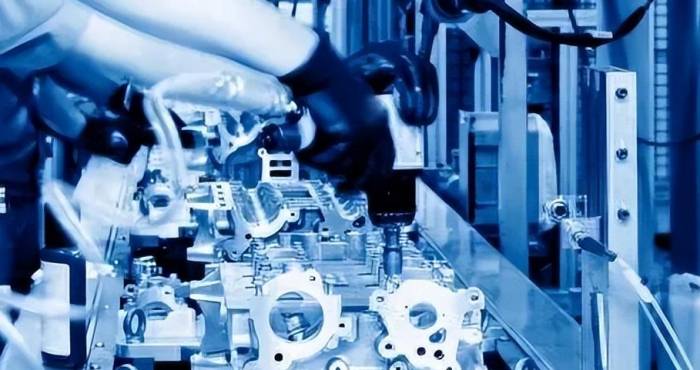China's Chip Exports Soar 25% to $542.7B
It can truly be said that what does not kill me will only make me stronger. The United States has virtually exhausted all means to curb China's development. It was initially believed that by restricting the export of key equipment such as photolithography machines, China's semiconductor industry would collapse. Moreover, to curb the development of China's semiconductor industry, the United States is continuing to join forces with Japan and the Netherlands to take further action against China.
However, contrary to expectations, China's semiconductor industry has not only avoided a desperate situation but has actually developed better and better. In the first half of this year, exports reached an impressive 542.74 billion yuan, with a year-on-year growth rate of a staggering 25.6%. Has China's chip industry broken through the encirclement? Are the ambitions of Europe and America about to be thwarted?
Advertisement
Has China's semiconductor industry broken through the encirclement?
There is nothing you cannot do if you can imagine it. People used to worry whether China's semiconductor industry would die completely due to U.S. sanctions. However, in just a few years, not only has China's semiconductor industry not died, but it has also developed better and better.
Recently, according to relevant media reports, China's export of mechanical and electrical products in the first half of the year reached 7.14 billion yuan, with a year-on-year growth rate of 8.2%, accounting for nearly 60% of all export products.
From this, we can see that our industrial upgrading has been very effective, and the results are significant.
In the past, it was said that we were the world's factory, occupying the lower and middle ends of manufacturing, but today we have gradually risen and have already occupied a place.
The most eye-catching part is our integrated circuits. In the field of integrated circuits, our exports have reached about 542.7 billion yuan, with a year-on-year growth rate of 25.6%.In contrast, South Korea, a world leader in semiconductors, saw a year-on-year increase of 49.9% in semiconductor exports in the first half of the year. From this, we can see that South Korea's growth rate is significantly higher than ours.
However, we should recognize one thing: South Korea faces no sanctions at all, whereas China has been sanctioned, leading to a direct relinquishment of many overseas markets. This has resulted in South Korea's seemingly unimpeded progress in areas such as mobile phones and beyond.
On the other hand, we are developing with our hands and feet tied. From this, we can discern the rapid advancement of China's semiconductor industry.

Of course, South Korea's growth is primarily in high-end chips, especially in the memory chip sector, where we are still dependent on others, so it's normal for our development to be slower.
But we must also admire the speed of our industry's progress. At this pace, it's estimated that in a few years, we may have no rivals in the mid-to-low-end chip market.
This is not good news for Europe and America. Consider that our export growth rate has already reached around 25%, with an export scale of about 542.7 billion yuan. How much more is there in our domestic production and consumption?
Historically, export growth has been slower than domestic market growth, a point clearly illustrated by our automotive industry.
Moreover, the most critical point is that while high-end chips have high profits, the market scale is small. This leads to higher demands as one occupies a higher position, but the pool of talent only decreases. Losing the mid-to-low-end market severs this pathway entirely.
Is it feasible to skip middle and high school and go straight to a Ph.D.? I think this is unrealistic, as technological development requires a vast pool of talent. So, while it may seem like we are still in the mid-to-low-end today, we must also recognize our potential.
For Europe and America, the threat may be drawing closer step by step, and the EU's containment efforts may only lead to repeated failures.The ambitions of Europe and America have once again been thwarted.
Today, Europe and America are trying to contain China's semiconductor industry, but in reality, they are more intent on obstructing China's future. From the current perspective, it seems that Europe and America are likely to be disappointed once more.
Semiconductors, as the hardware foundation of the information industry, play an extremely important role. The United States is well aware of this fact, and since China is leading in the field of network communications, they aim to cut off the hardware supply, preventing the integration of body and soul.
This has led to our current situation where we have technological advancements that cannot be implemented. This is precisely what the United States wants because they need to buy time for themselves.
Therefore, in the field of AI, we see the United States taking a step ahead of us. This is exactly what the United States wants to see. But can the United States really succeed?
In fact, they cannot, because the United States is relatively fragmented in both manufacturing and the market, while China has a unified market, production, and research and development, which leads to a very fast iteration speed in China.
Thus, it is completely understandable that we see a significant increase in the export of our integrated circuits today, and the future will only be more exaggerated. Europe and America's attempt to contain China can only be met with the advice to first take care of their own affairs, as disasters are looming for Europe and America.
For us, it is about continuing along the path we have been on until there are no more obstacles, and only then can we declare success.